Cyclooxygenase
Products for Cyclooxygenase
- Cat.No. Nombre del producto Información
-
GC18320
15-keto Prostaglandin E1
15-keto PGE1 is the inactive metabolite of PGE1 produced by 15-hydroxy PGDH.
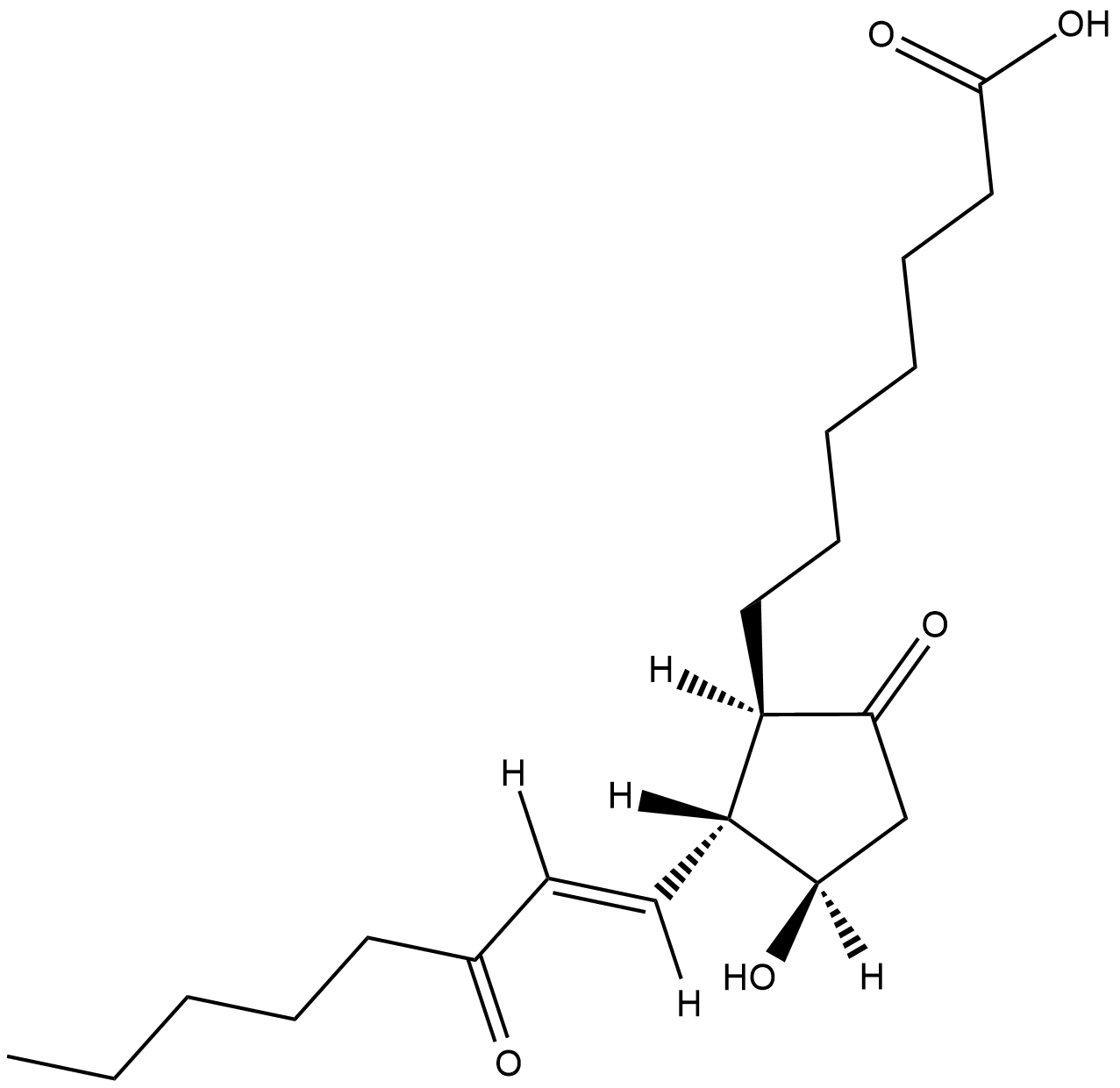
-
GC40605
15-keto Prostaglandin E2
15-keto Prostaglandin E2 (15-keto PGE2) is a metabolite of PGE2 formed by 15-hydroxy PGDH.
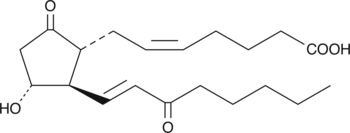
-
GC40582
15-keto Prostaglandin F1α
15-keto PGF1α is the initial metabolite of PGF1α via 15-hydroxy PGDH.
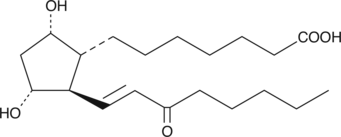
-
GC41418
15-keto Prostaglandin F2α
15-keto Prostaglandin F2α (15-keto PGF2α) is the first metabolite of PGF2α.

-
GC41935
15-keto Treprostinil (sodium salt)
15-keto Treprostinil is an impurity found in treprostinil, which is a stable analog of prostaglandin I2 with a longer plasma half-life.

-
GC41936
15-keto-17-phenyl trinor Prostaglandin F2α
Bimatoprost is an F-series prostaglandin (PG) analog which has been approved for use as an ocular hypotensive drug.
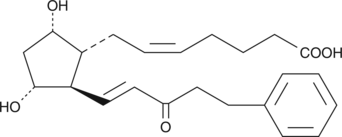
-
GC41937
15-keto-17-phenyl trinor Prostaglandin F2α ethyl amide
Bimatoprost is the Allergan trade name for 17-phenyl trinor prostaglandin F2α ethyl amide (17-phenyl trinor PGF2α ethyl amide), an F-series PG analog which has been approved for use as an ocular hypotensive drug.
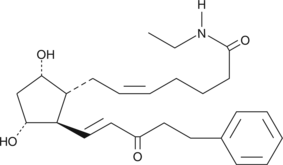
-
GC40974
16(S)-Iloprost
Iloprost is a second generation structural analog of prostacyclin (PGI2) with about ten-fold greater potency than the first generation stable analogs, typified by carbaprostacyclin.

-
GC18778
16,16-dimethyl Prostaglandin A1
16,16-dimethyl PGA1 is a metabolism resistant analog of PGA1.
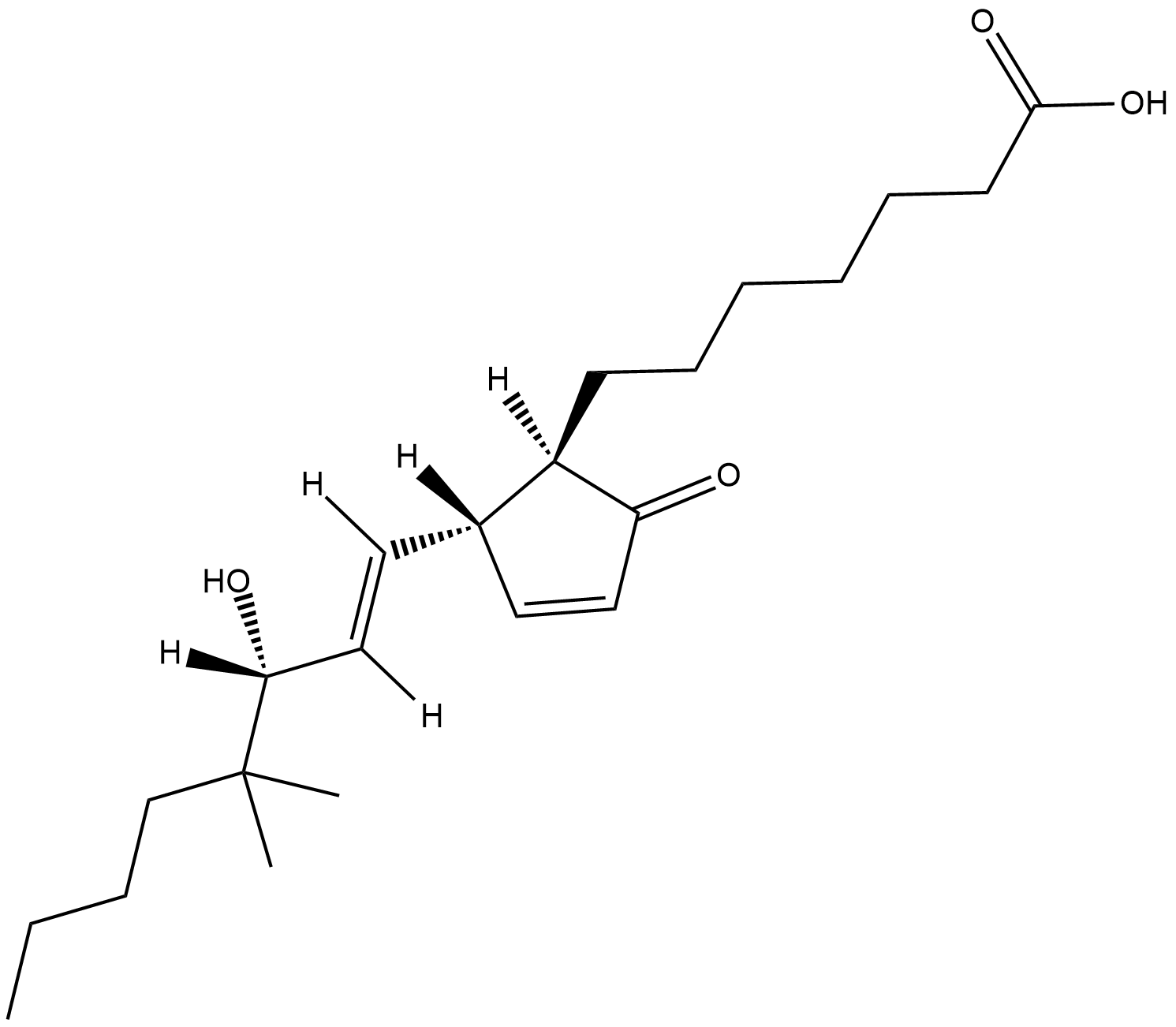
-
GC41942
16,16-dimethyl Prostaglandin A2
16,16-dimethyl PGA2 is a metabolism-resistant analog of PGA2 with a prolonged in vivo half-life.
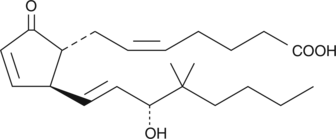
-
GC41159
16,16-dimethyl Prostaglandin D2
16,16-dimethyl PGD2 is a metabolically stable synthetic analog of PGD2.

-
GC18777
16,16-dimethyl Prostaglandin E1
16,16-dimethyl PGE1 is a metabolically stable synthetic analog of PGE1.
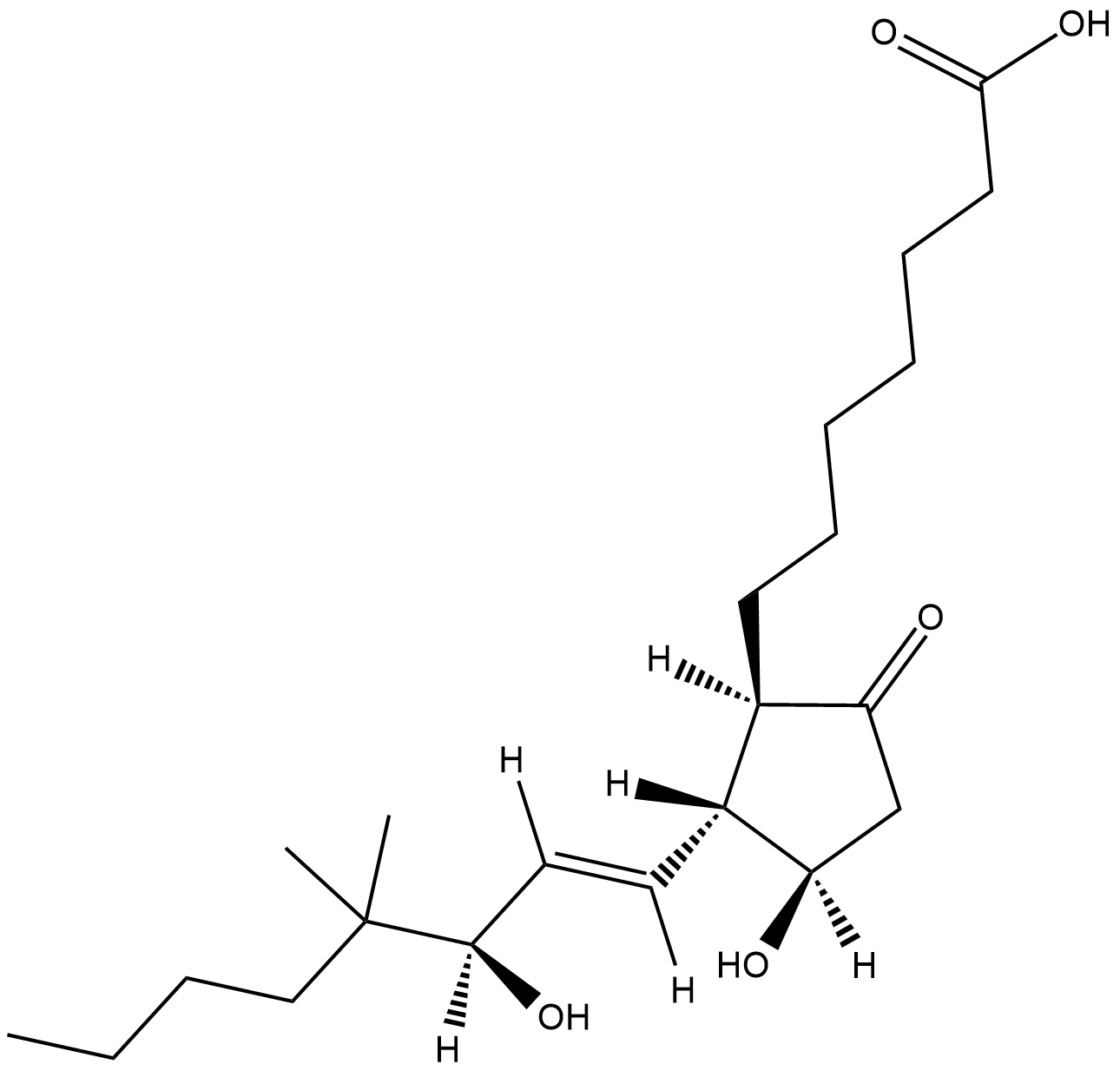
-
GC41943
16,16-dimethyl Prostaglandin E2 p-(p-acetamidobenzamido) phenyl ester
The p-(p-acetamidobenzamido) phenyl ester is a crystalline derivative of 16,16-dimethyl PGE2 and a potential prodrug.
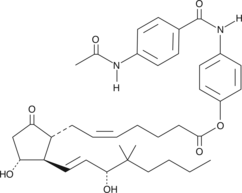
-
GC18774
16,16-dimethyl Prostaglandin F2α
16,16-dimethyl PGF2α is a metabolically stable analog of PGF2α.
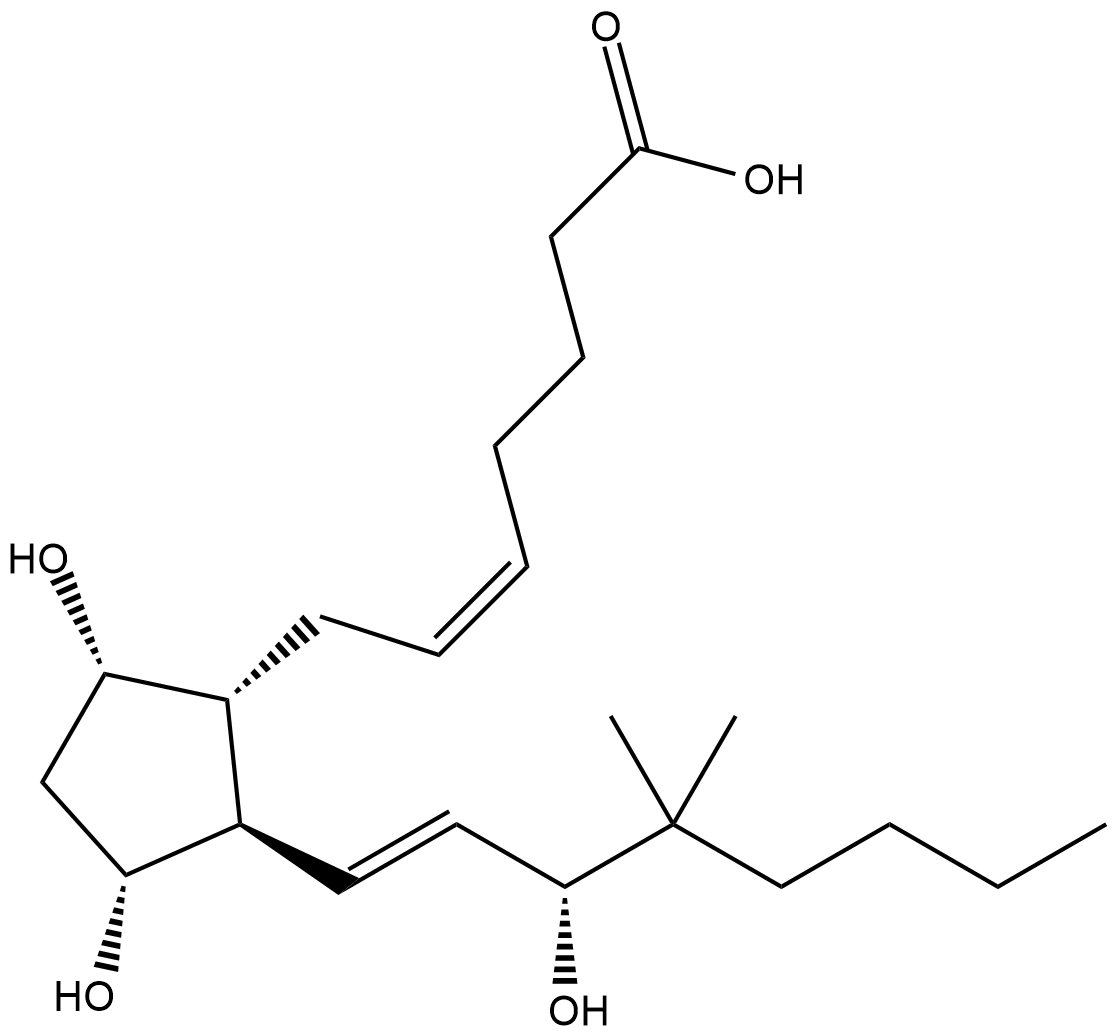
-
GC18803
16,16-dimethyl Prostaglandin F2β
16,16-dimethyl PGF2β is a metabolically stable analog of PGF2β.
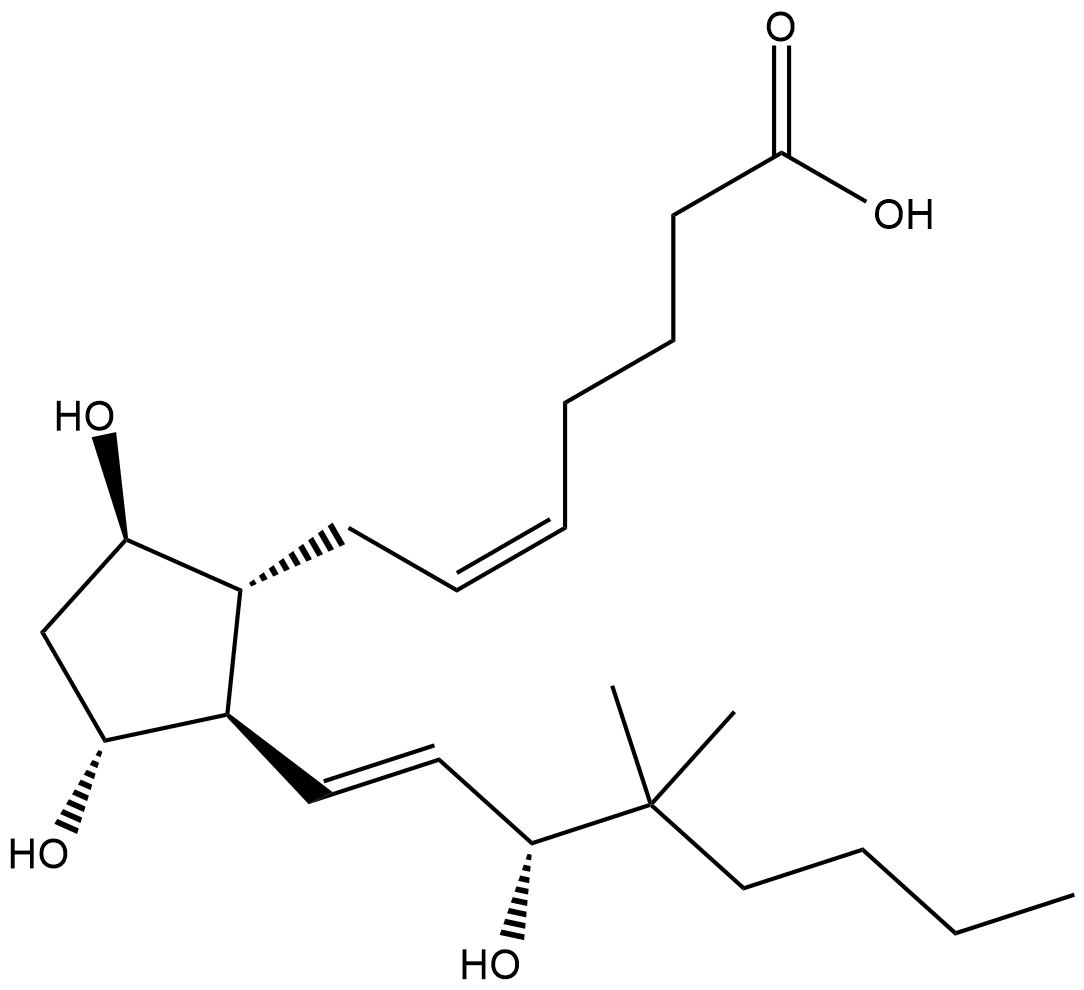
-
GC40762
16-phenoxy Prostaglandin F2α ethyl amide
Prostaglandin F2α (PGF2α), acting through the FP receptor, causes smooth muscle contraction and exhibits potent luteolytic activity.
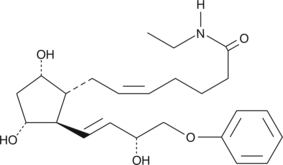
-
GC18785
16-phenoxy tetranor Prostaglandin A2
16-phenoxy tetranor PGA2 is a minor metabolite found in human plasma after intravenous administration of sulprostone.
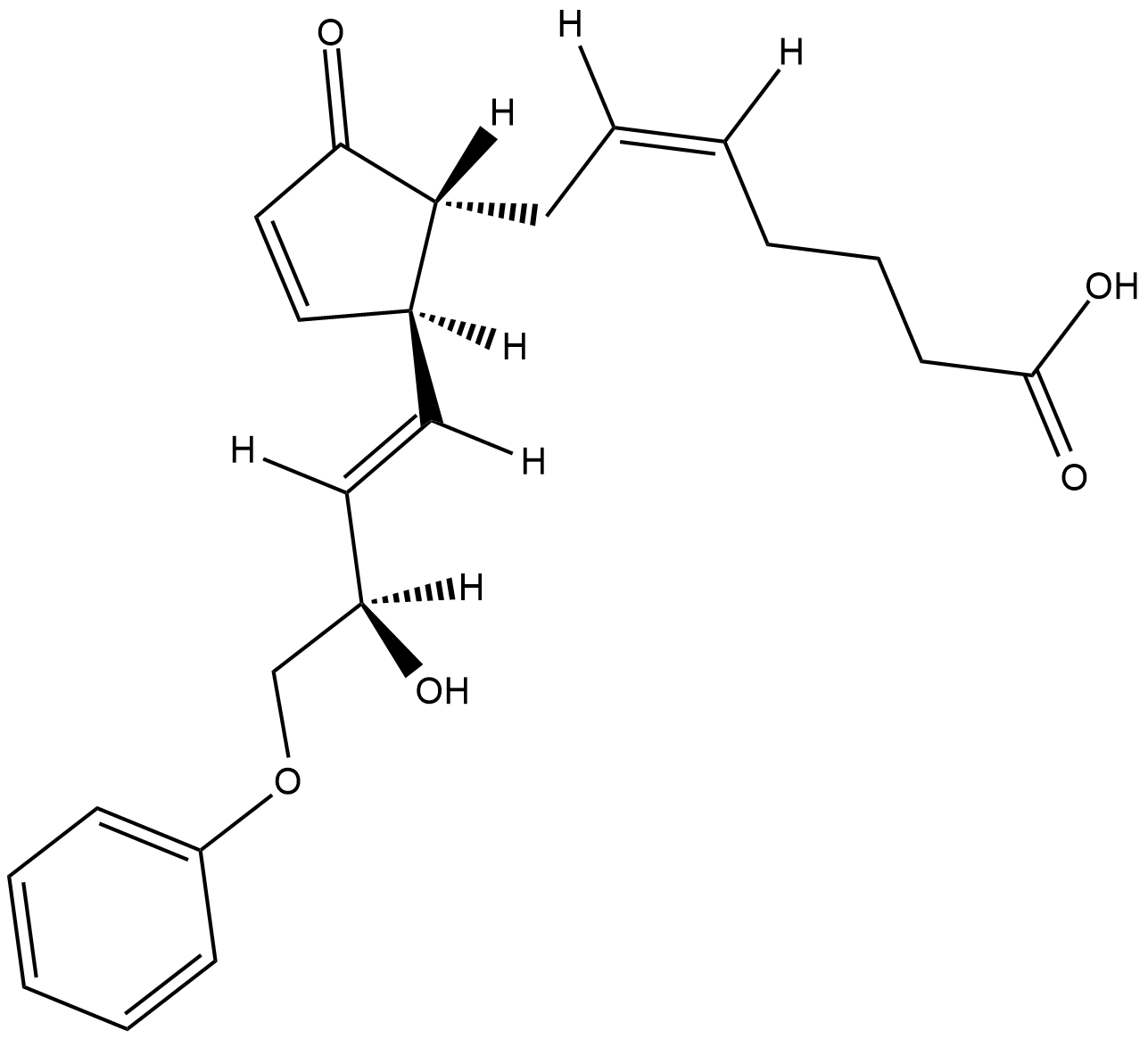
-
GC41447
16-phenoxy tetranor Prostaglandin E2
16-phenoxy tetranor PGE2 is the free acid form of sulprostone formed by the hydrolysis of the methylsulfonamide bond.
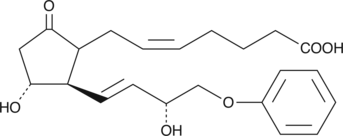
-
GC41946
16-phenoxy tetranor Prostaglandin F2α
16-phenoxy PGF2α is a metabolically stable analog of PGF2α.
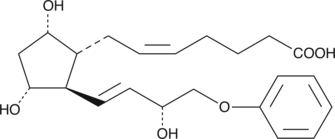
-
GC41947
16-phenoxy tetranor Prostaglandin F2α cyclopropyl methyl amide
The actions of many clinical F-series prostaglandins (PGs), including those used for estrous synchronization and for reduction of intraocular pressure (IOP), are mediated through the PGF2α (FP) receptor.
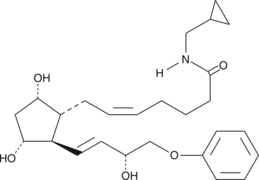
-
GC41948
16-phenoxy tetranor Prostaglandin F2α isopropyl ester
Prostaglandin F2α (PGF2α) drives luteolysis and smooth muscle contraction by activating the FP receptor.

-
GC40961
16-phenoxy tetranor Prostaglandin F2α methyl ester
Prostaglandin F2α (PGF2α) drives luteolysis and smooth muscle contraction by activating the FP receptor.

-
GC45307
17(R)-Resolvin D3

-
GC41209
17-oxo-7(Z),10(Z),13(Z),15(E),19(Z)-Docosapentaenoic Acid
Docosapentaenoic acid (DPA) is a ω-3 fatty acid found in fish oils.

-
GC41960
17-phenoxy trinor Prostaglandin F2α ethyl amide
Prostaglandin F2α (PGF2α), acting through the FP receptor, causes smooth muscle contraction and exhibits potent luteolytic activity.

-
GC41963
17-phenyl trinor Prostaglandin A2
17-phenyl trinor PGA2 is a synthetic prostaglandin analog designed for increased half-life and greater potency.
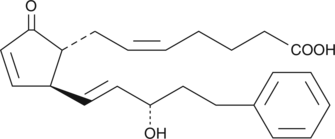
-
GC41964
17-phenyl trinor Prostaglandin D2
17-phenyl trinor Prostaglandin D2 (17-phenyl trinor PGD2) is a novel, chemically stable analog of PGD2 wherein the lower side chain is modified by the addition of a phenyl group at C-17 in place of the last 3 ω-chain carbon atoms.

-
GC41965
17-phenyl trinor Prostaglandin E2
17-phenyl trinor PGE2 is a synthetic analog of PGE2.
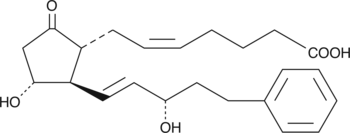
-
GC41966
17-phenyl trinor Prostaglandin E2 ethyl amide
17-phenyl trinor PGE2 ethyl amide is derived from 17-phenyl trinor PGE2, a synthetic analog of PGE2 that acts as an agonist of EP1 and EP3 receptors in mice (Ki = 14 and 3.7 nM, respectively) and EP1, EP3, and EP4 in rats (Ki = 25, 4.3, and 54 nM, respectively).

-
GC40990
17-phenyl trinor Prostaglandin F2α
17-phenyl trinor Prostaglandin F2α (17-phenyl trinor PGF2α) is a metabolically stable analog of PGF2α and is a potent agonist for the FP receptor.
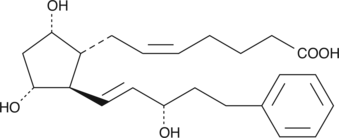
-
GC41967
17-phenyl trinor Prostaglandin F2α amide
17-fenil trinor Prostaglandina F2α la amida es un metabolito N-desetil del bimatoprost.

-
GC41969
17-phenyl trinor Prostaglandin F2α cyclopropyl amide
17-phenyl trinor Prostaglandin F2α cyclopropyl amide (17-phenyl trinor PGF2α cyclopropyl amide) is a novel analog of 17-phenyl trinor PGF2α ethyl amide.
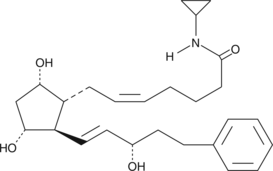
-
GC41970
17-phenyl trinor Prostaglandin F2α cyclopropyl methyl amide
Prostaglandin F2α (PGF2α) activates the FP receptor, promoting smooth muscle contraction and luteolysis.
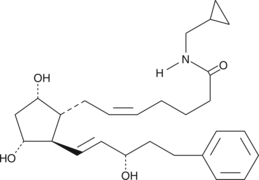
-
GC41971
17-phenyl trinor Prostaglandin F2α diethyl amide
17-phenyl trinor Prostaglandin F2α diethyl amide (17-phenyl trinor PGF2α diethyl amide) is an analog of PGF2α in which the C-1 carboxyl group has been modified to an N-diethyl amide.
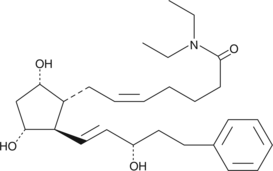
-
GC46458
17-phenyl trinor Prostaglandin F2α dimethyl amide
An isomer of 17-phenyl trinor prostaglandin F2α ethyl amide

-
GC41972
17-phenyl trinor Prostaglandin F2α isopropyl ester
17-phenyl trinor PGF2α N-ethyl amide is an F-series prostaglandin analog which has been approved for use as an ocular hypotensive drug, sold under the Allergan trade name Bimatoprost.

-
GC41973
17-phenyl trinor Prostaglandin F2α methyl amide
17-phenyl trinor Prostaglandin F2α (17-phenyl trinor PGF2α) is a metabolically stable analog of PGF2α and is a potent agonist for the FP receptor, binding with a relative potency of 756% compared to that of PGF2α.
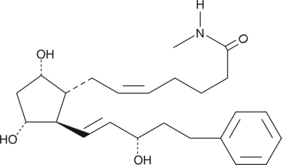
-
GC40392
17-phenyl trinor Prostaglandin F2α methyl ester
17-fenil trinor Prostaglandina F2α El éster metÍlico es un profÁrmaco de bimatoprost.
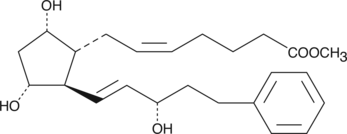
-
GC41974
17-phenyl trinor Prostaglandin F2α serinol amide
2-Arachidonyl glycerol (2-AG) exhibits cannabinoid agonist activity at the central cannabinoid (CB1) receptor, is an important endogenous monoglyceride species, and is thus considered to be the natural ligand for the CB1 receptor.

-
GC46463
17-phenyl trinor Prostaglandin F2α-d4
An internal standard for the quantification of bimatoprost (free acid)
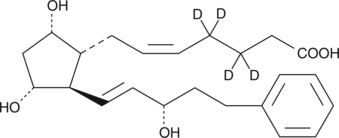
-
GC41292
17-phenyl trinor-13,14-dihydro Prostaglandin A2
17-phenyl trinor-13,14-dihydro Prostaglandin A2 is a synthetic PG analog whose biological activity has not been widely reported.
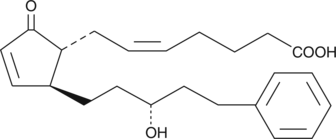
-
GC18739
17-trans Prostaglandin E3
17-trans PGE3 is an isomer of PGE3 which could theoretically result from the COX metabolism of dietary trans-fatty acids.
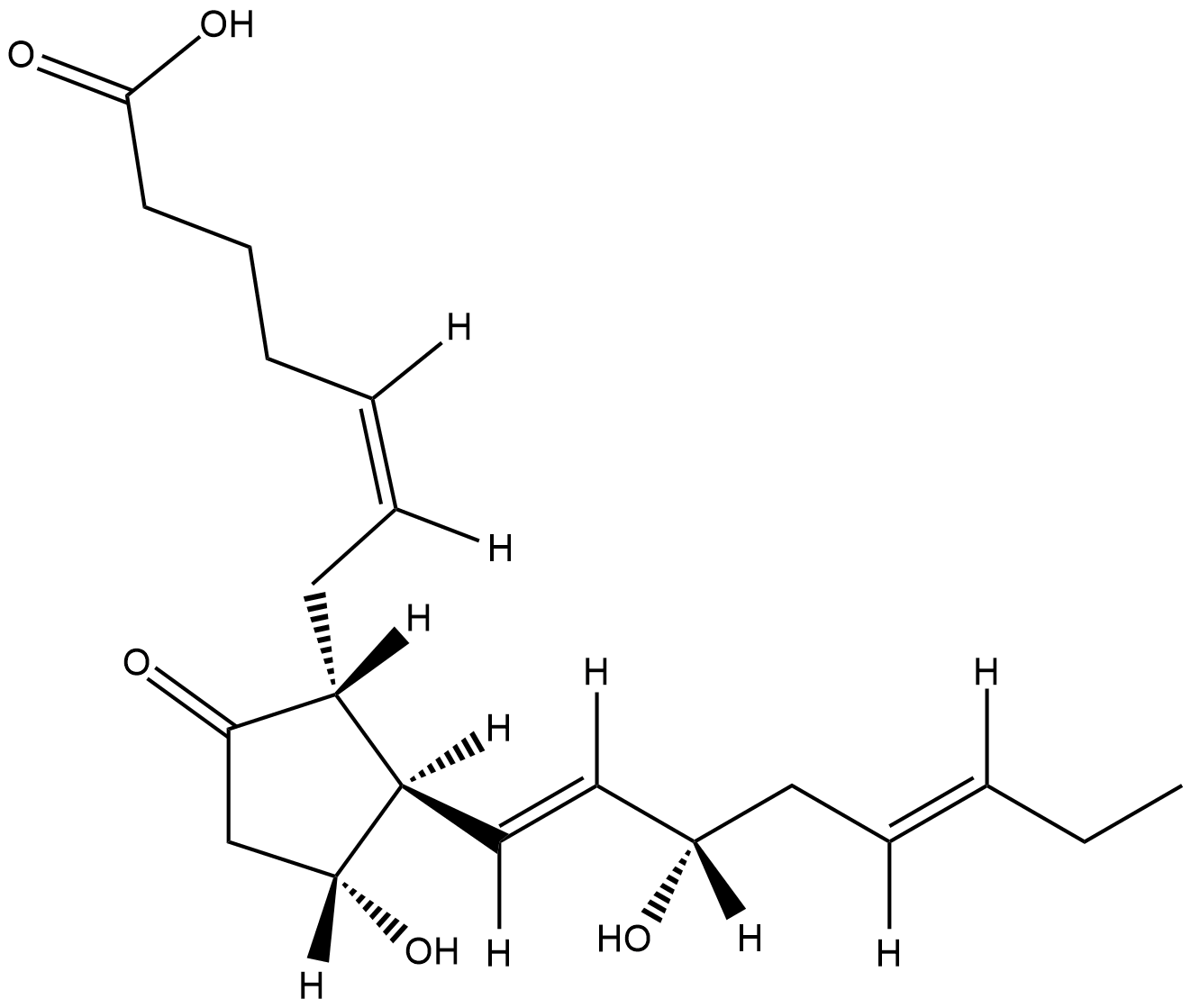
-
GC41420
17-trans Prostaglandin F3α
17-trans PGF3α is a double bond isomer of PGF3α and a potential metabolite of trans dietary fatty acids.
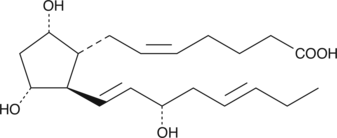
-
GC41975
17-trifluoromethylphenyl trinor Prostaglandin F2α
A number of 17-phenyl trinor prostaglandin F2α (17-phenyl trinor PGF2α) derivatives have been approved for the treatment of glaucoma.

-
GC41976
17-trifluoromethylphenyl trinor Prostaglandin F2α ethyl amide
Prostaglandin F2α (PGF2α), acting through the FP receptor, causes smooth muscle contraction and exhibits potent luteolytic activity.

-
GC41978
17-trifluoromethylphenyl trinor Prostaglandin F2α methyl ester
Prostaglandin F2α (PGF2α), acting through the FP receptor, causes smooth muscle contraction and exhibits potent luteolytic activity.

-
GC46465
17-trifluoromethylphenyl-13,14-dihydro trinor Prostaglandin F1α
An ocular hypotensive agent

-
GC46466
17-trifluoromethylphenyl-13,14-dihydro trinor Prostaglandin F2α
A prostaglandin F derivative similar to latanoprost free acid

-
GC18786
19(R)-hydroxy Prostaglandin A2
Found in human seminal plasma, 19(R)-hydroxy prostaglandin A2 (19(R)-hydroxy PGA2) is presumed to be a non-enzymatic dehydration metabolite of 19(R)-hydroxy PGE2, which is also found in semen.
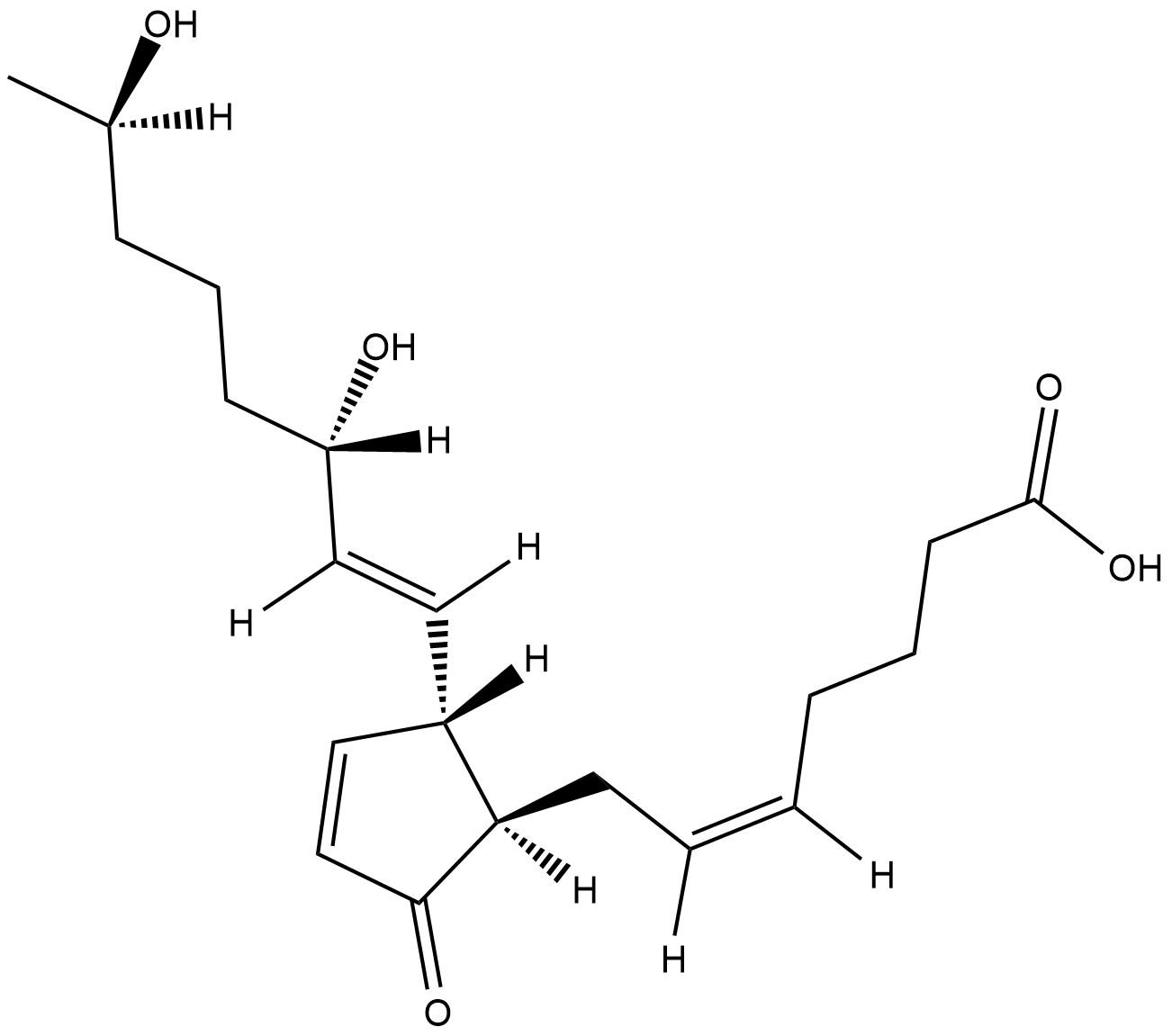
-
GC18816
19(R)-hydroxy Prostaglandin E1
19(R)-hydroxy PGE1 is the major prostaglandin found in the semen of primates, including man.
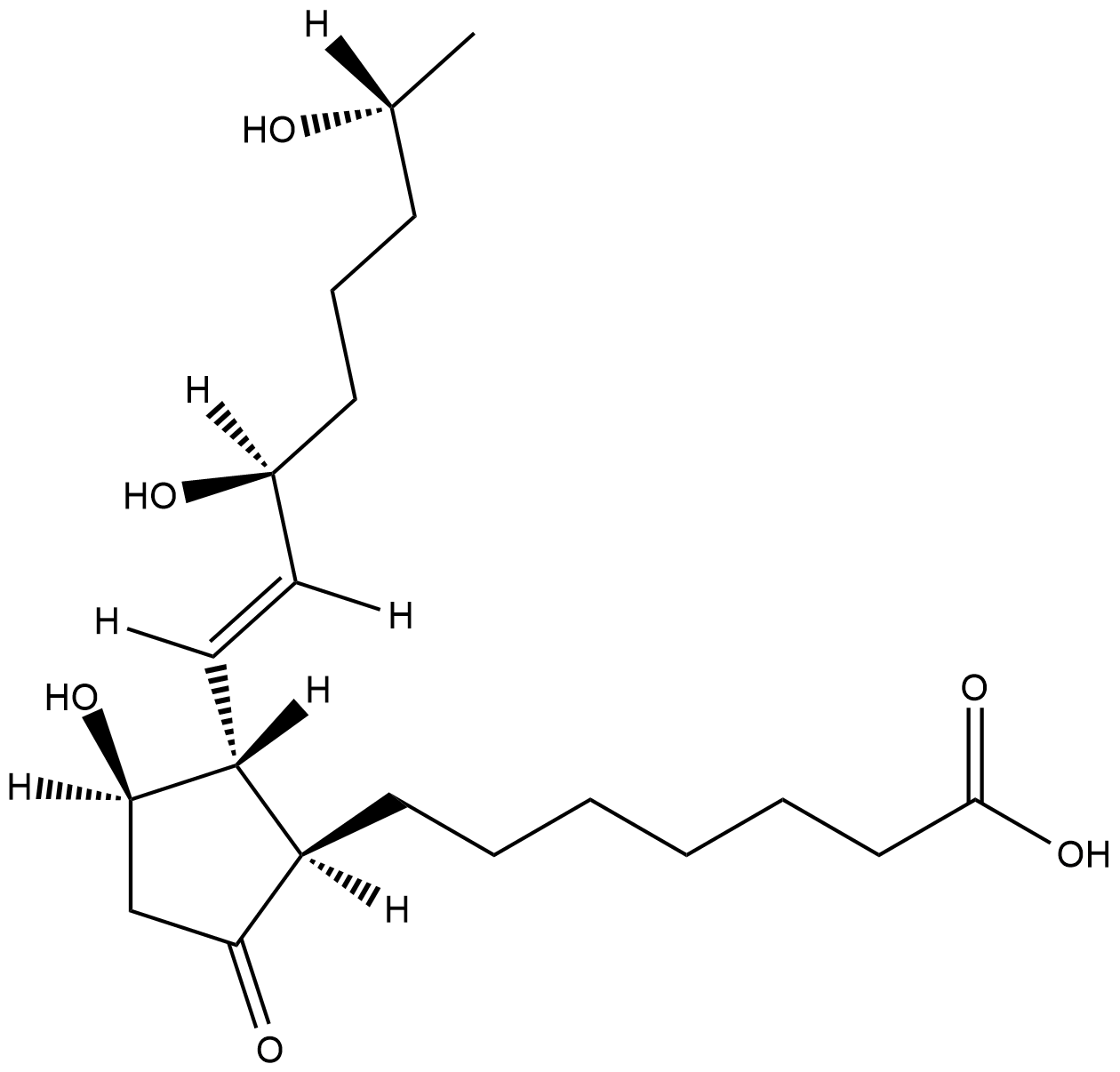
-
GC41473
19(R)-hydroxy Prostaglandin E2
19(R)-hydroxy Prostaglandin E2 (19(R)-hydroxy PGE2) is found in the semen of primates, including man.
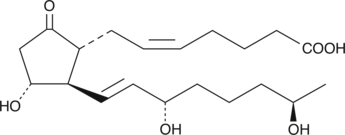
-
GC41981
19(R)-hydroxy Prostaglandin F1α
19(R)-hydroxy PGF1α is an ω-1 hydroxylase metabolite of PGF1α that has been identified in the semen of humans and marsupials.
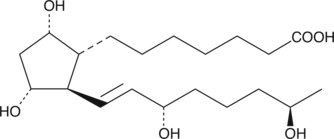
-
GC40533
19(R)-hydroxy Prostaglandin F2α
19(R)-hydroxy PGF2α is an ω-1 hydroxylase metabolite of PGF2α found in human semen.
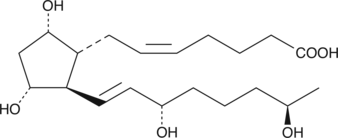
-
GC18748
1a,1b-dihomo Prostaglandin E1
Prostaglandin E1 (PGE1) is not a major naturally occurring PG, but is widely administered clinically for several indications including peripheral occlusive vascular disease, erectile dysfunction, and in neonatal cardiology.
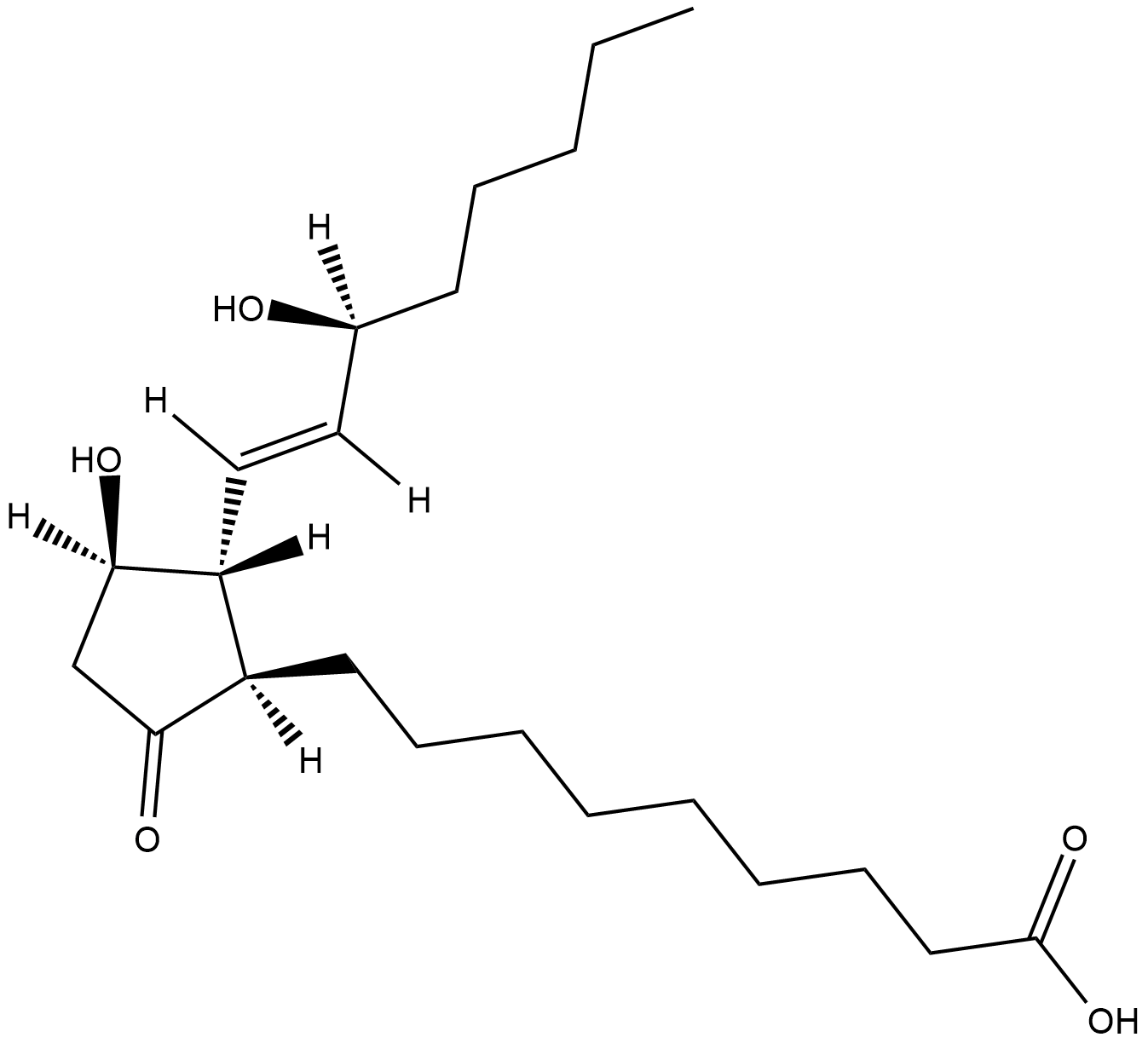
-
GC41160
1a,1b-dihomo Prostaglandin E2
1a,1b-dihomo Prostaglandin E2 (PGE2) is a rare polyunsaturated fatty acid first identified in extracts of sheep vesicular gland microsomes, known to contain COX, incubated with adrenic acid.

-
GC41245
1a,1b-dihomo Prostaglandin F2α
1a,1b-dihomo Prostaglandin F2α (1a,1b-dihomo PGF2α) is the theoretical product of adrenic acid in the COX pathway.
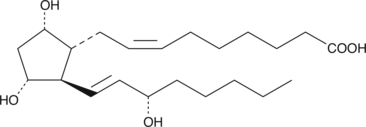
-
GC18830
2,3-dinor Prostaglandin E1
Prostaglandin E1 (PGE1) is not a major naturally occurring prostaglandin, but it is widely administered clinically for several indications including peripheral occlusive vascular disease, erectile dysfunction and in neonatal cardiology.
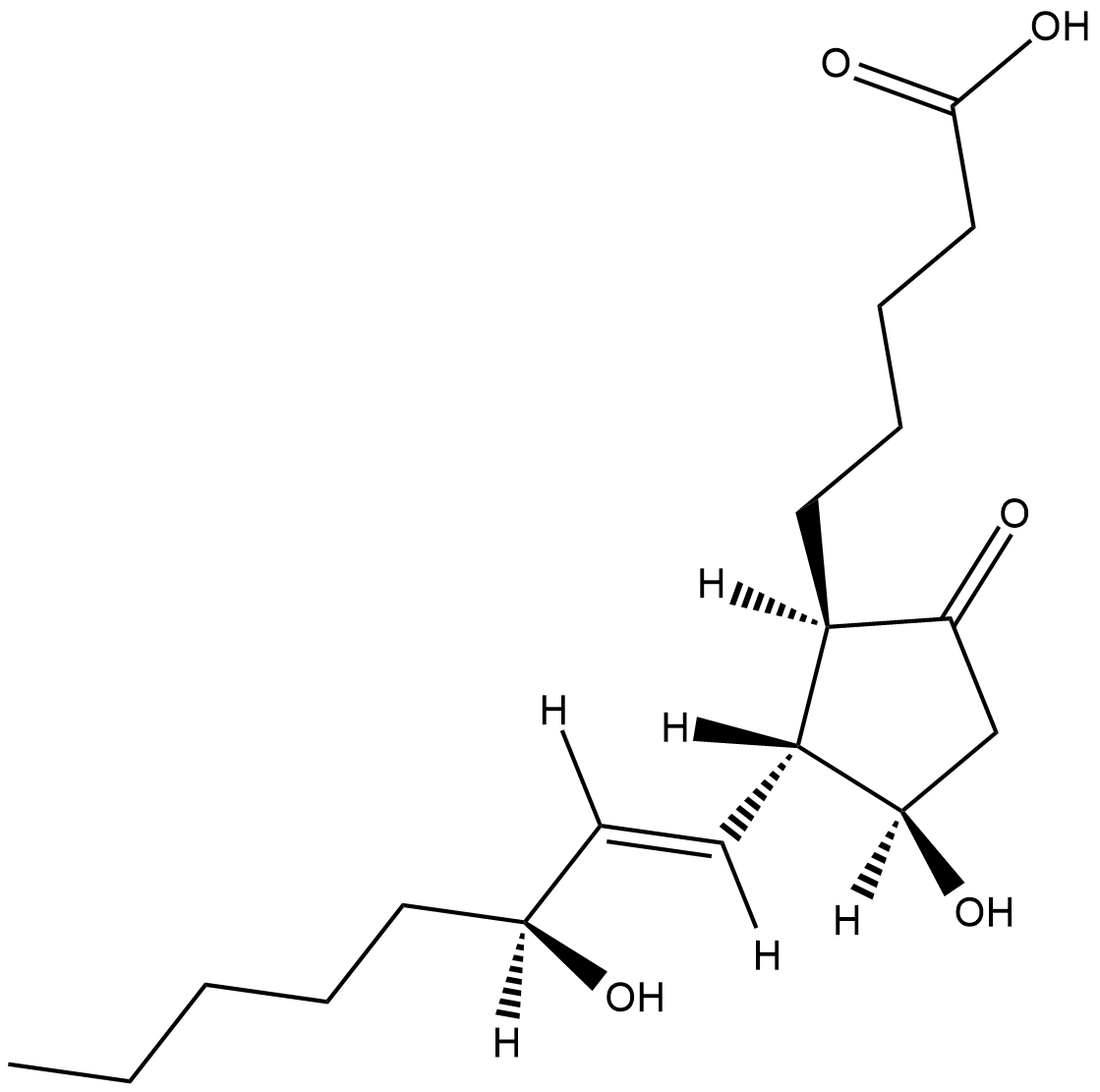
-
GC42065
2,3-dinor Thromboxane B1
Thromboxane B2 (TXB2) is released in substantial quantities from aggregating platelets and metabolized during circulation to 11-dehydro TXB2 and 2,3-dinor TXB2.
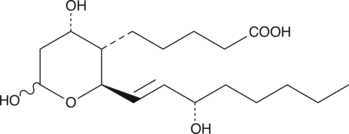
-
GC40415
2,3-dinor-11β-Prostaglandin F2α
2,3-dinor-11β-Prostaglandin F2α (2,3-dinor-11β-PGF2α) was recovered from the urine of both normal monkeys and humans when infused with radiolabeled PGD2, where it represented approximately 1% and 4% of the infused radiolabeled dose, respectively.
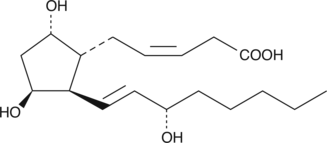
-
GC40416
2,3-dinor-8-iso Prostaglandin F2α
8-iso Prostaglandin F2α (8-iso PGF2α; 8-isoprostane) is a prostaglandin-like product of non-specific lipid peroxidation.
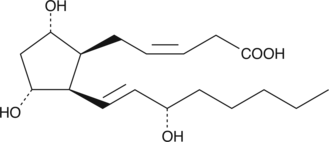
-
GC41161
20-ethyl Prostaglandin E2
20-ethyl Prostaglandin E2 (20-ethyl PGE2) is an analog of PGE2 in which the ω-chain has been extended by the addition of two methylene carbon atoms.
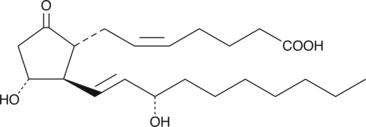
-
GC41246
20-ethyl Prostaglandin F2α
20-ethyl Prostaglandin F2α (20-ethyl PGF2α) is an analog of PGF2α in which the ω-chain has been extended by the addition of two more methylene carbon atoms.
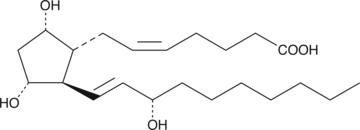
-
GC41474
20-hydroxy Prostaglandin E2
20-hydroxy Prostaglandin E2 (20-hydroxy PGE2) is a product of cytochrome P450 metabolism of PGE2.
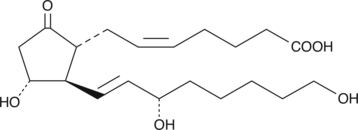
-
GC40534
20-hydroxy Prostaglandin F2α
20-hydroxy Prostaglandin F2α (20-hydroxy PGF2α) is the ω-oxidation product of PGF2α.
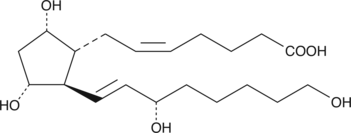
-
GC49849
3-Aminosalicylic Acid
A salicylic acid derivative

-
GC42301
3-methoxy Limaprost
Limaprost is an analog of prostaglandin E1 (PGE1) with structural modifications intended to give it a prolonged half-life and greater potency.

-
GC18793
3-methoxy Prostaglandin F1α
3-methoxy PGF1α is a novel analog of PGF1α with a methoxy group in the 3-position of the upper side chain.
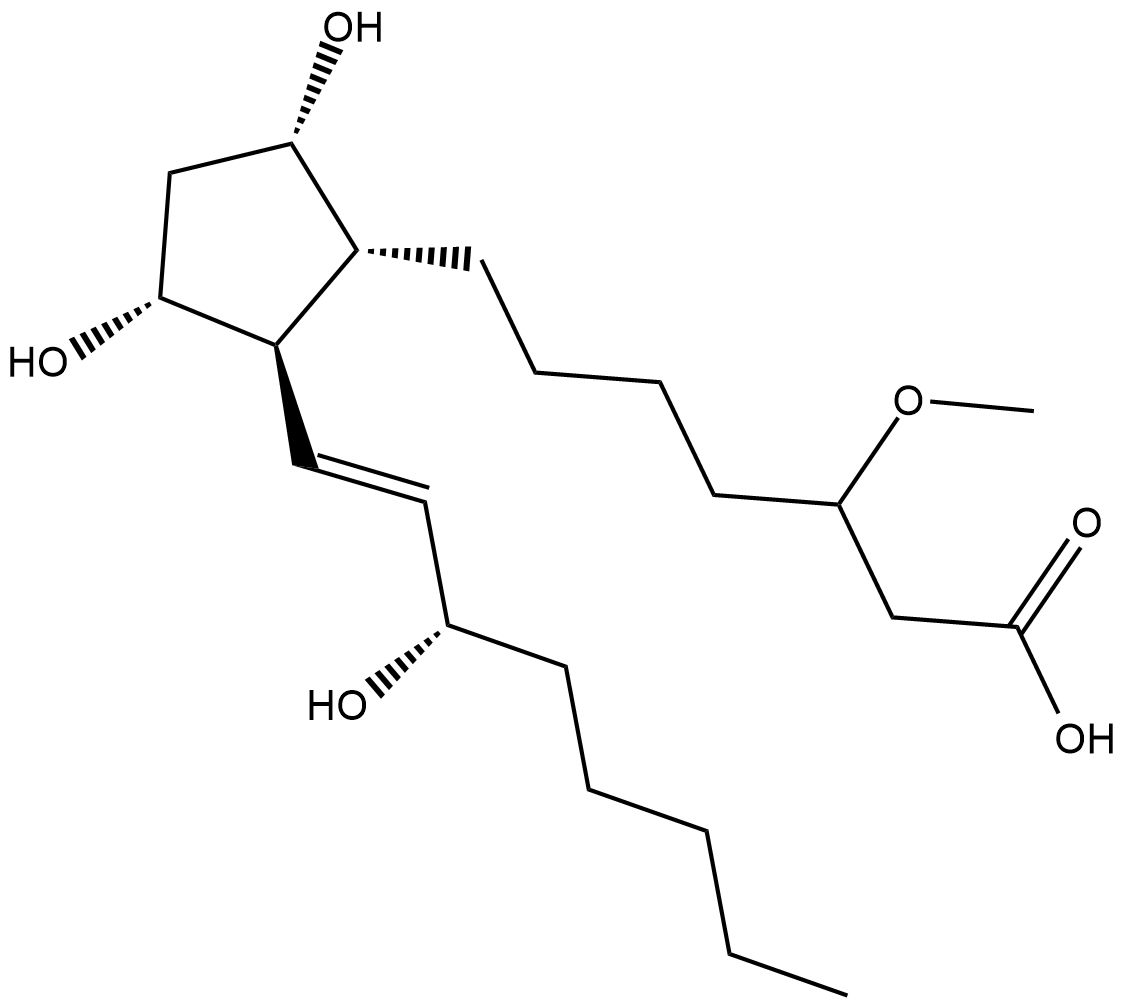
-
GC18527
4'-hydroxy Flurbiprofen
A major active metabolite of flurbiprofen
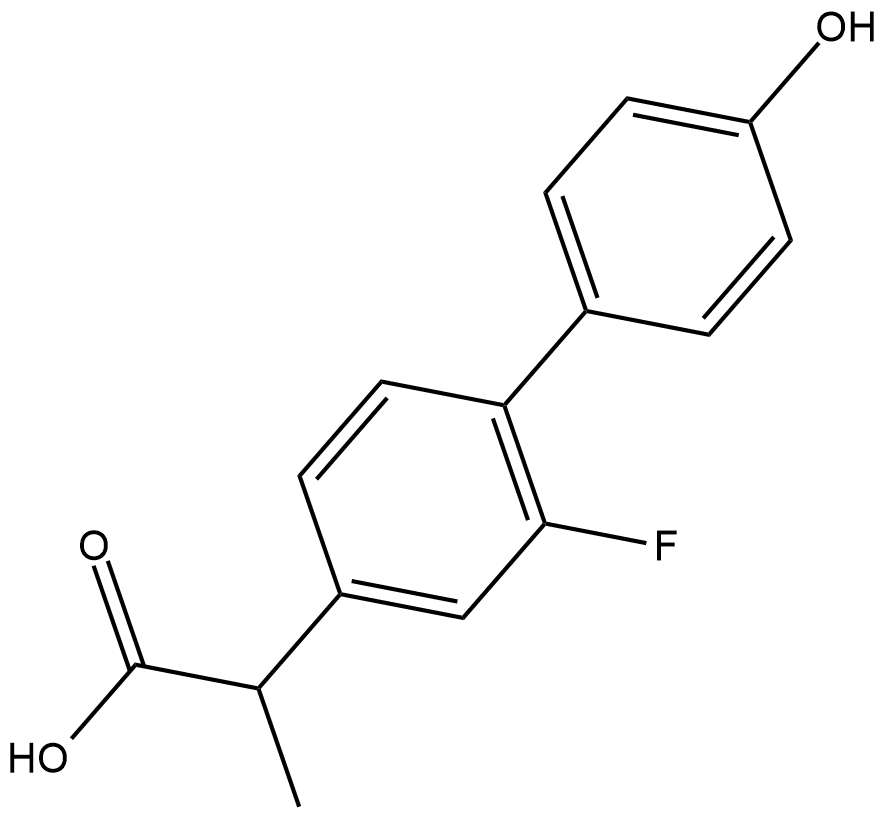
-
GC18582
5'-hydroxy Meloxicam
A metabolite of meloxicam
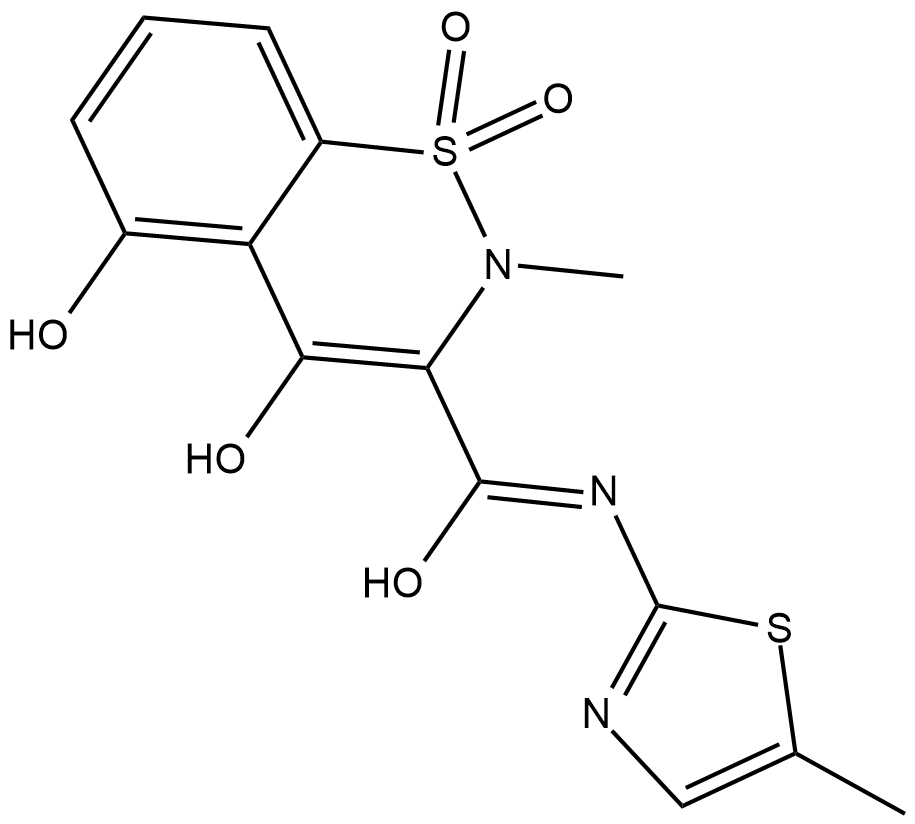
-
GC52227
5-(3',4'-Dihydroxyphenyl)-γ-Valerolactone
An active metabolite of various polyphenols

-
GC52413
5-Aminosalicylic Acid-d7
An internal standard for the quantification of 5-aminosalicylic acid

-
GC46682
5-Butyl-4-[2,3-difluoro-4-(phenylmethoxy)phenyl]-6-phenyl-2-pyrimidinamine
An mPGES-1 inhibitor
![5-Butyl-4-[2,3-difluoro-4-(phenylmethoxy)phenyl]-6-phenyl-2-pyrimidinamine Chemical Structure 5-Butyl-4-[2,3-difluoro-4-(phenylmethoxy)phenyl]-6-phenyl-2-pyrimidinamine Chemical Structure](/media/struct/GC4/GC46682.png)
-
GC40336
5-cis Carbaprostacyclin
5-cis Carbaprostacyclin is a stable analog of PGI2 and an isomer of carbaprostacyclin.
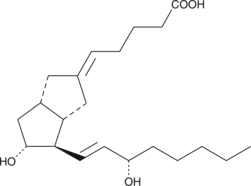
-
GC40976
5-cis Iloprost
5-cis Iloprost is the C-5 cis-isomer of iloprost, a second generation structural analog of prostaglandin I2 (prostacyclin).

-
GC42546
5-hydroxy Diclofenac
5-hydroxy Diclofenac is a metabolite of the NSAID diclofenac formed by the cytochrome P450 (CYP) isoform CYP3A4.

-
GC49119
5-hydroxy Flunixin
A metabolite of flunixin

-
GC49315
5-hydroxy Indomethacin
A metabolite of indomethacin

-
GC40284
5-trans Fluprostenol
Travoprost is the Alcon trade name for fluprostenol isopropyl ester, an F-series prostaglandin analog which has been approved for use as an ocular hypotensive drug.

-
GC41590
5-trans Fluprostenol isopropyl ester
Travoprost is the Alcon trade name for fluprostenol isopropyl ester, an F-series prostaglandin analog which has been approved for use as an ocular hypotensive drug.

-
GC41094
5-trans Latanoprost
Latanoprost is an F-series prostaglandin analog which has been approved for use as an ocular hypotensive drug.

-
GC41228
5-trans Latanoprost (free acid)
Latanoprost is an F-series prostaglandin (PG) analog which has been approved for use as an ocular hypotensive drug.
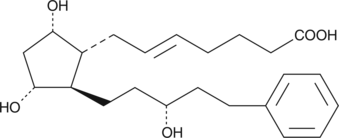
-
GC41423
5-trans Prostaglandin E2
5-trans PGE2 occurs naturally in some gorgonian corals and is a common impurity in commercial lots of PGE1.
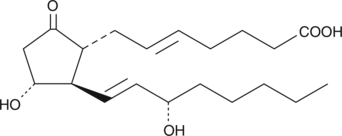
-
GC40583
5-trans Prostaglandin F2α
5-trans PGF2α is the more thermodynamically stable C-5 olefin isomer of PGF2α and is a common impurity in commercial lots of PGF2α.
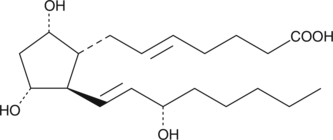
-
GC42568
5-trans Prostaglandin F2α (tromethamine salt)
5-trans PGF2α tromethamine salt is a derivative of 5-trans PGF2α with increased water solubility.

-
GC40584
5-trans Prostaglandin F2β
5-trans PGF2β is the 9β-hydroxy isomer of 5-trans PGF2α.
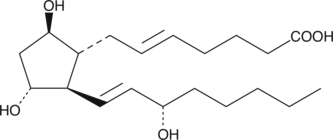
-
GC40337
5-trans U-44069
5-trans U-44069 is the C-5 double bond isomer of U-44069.
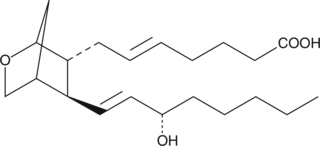
-
GC49438
5-trans-17-phenyl trinor Prostaglandin F2α
The 5-trans isomer of 17-phenyl trinor PGF2α

-
GC40649
5-trans-17-phenyl trinor Prostaglandin F2α ethyl amide
17-phenyl trinor Prostaglandin F2α ethyl amide (17-phenyl trinor PGF2α ethyl amide) is an F-series PG analog which has been approved for use as an ocular hypotensive drug.

-
GC40585
6α-Prostaglandin I1
6α-Prostaglandin I1 (6α-PGI1) is a stable Prostaglandin I2 (PGI2) analog resistant to hydrolysis in aqueous solutions.
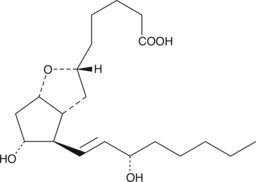
-
GC40586
6β-Prostaglandin I1
6β-PGI1 is a stable PGI2 analog resistant to hydrolysis in aqueous solutions.
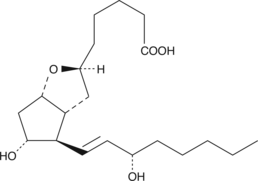
-
GC40535
6,15-diketo-13,14-dihydro Prostaglandin F1α
6,15-diketo-13,14-dihydro PGF1α is a metabolite of PGI2.

-
GC49183
6-hydroxy Etodolac
A metabolite of etodolac

-
GC18820
6-keto Prostaglandin E1
6-keto PGE1 is a metabolite isolated after the incubation of PGI2 with rabbit liver microsomes.
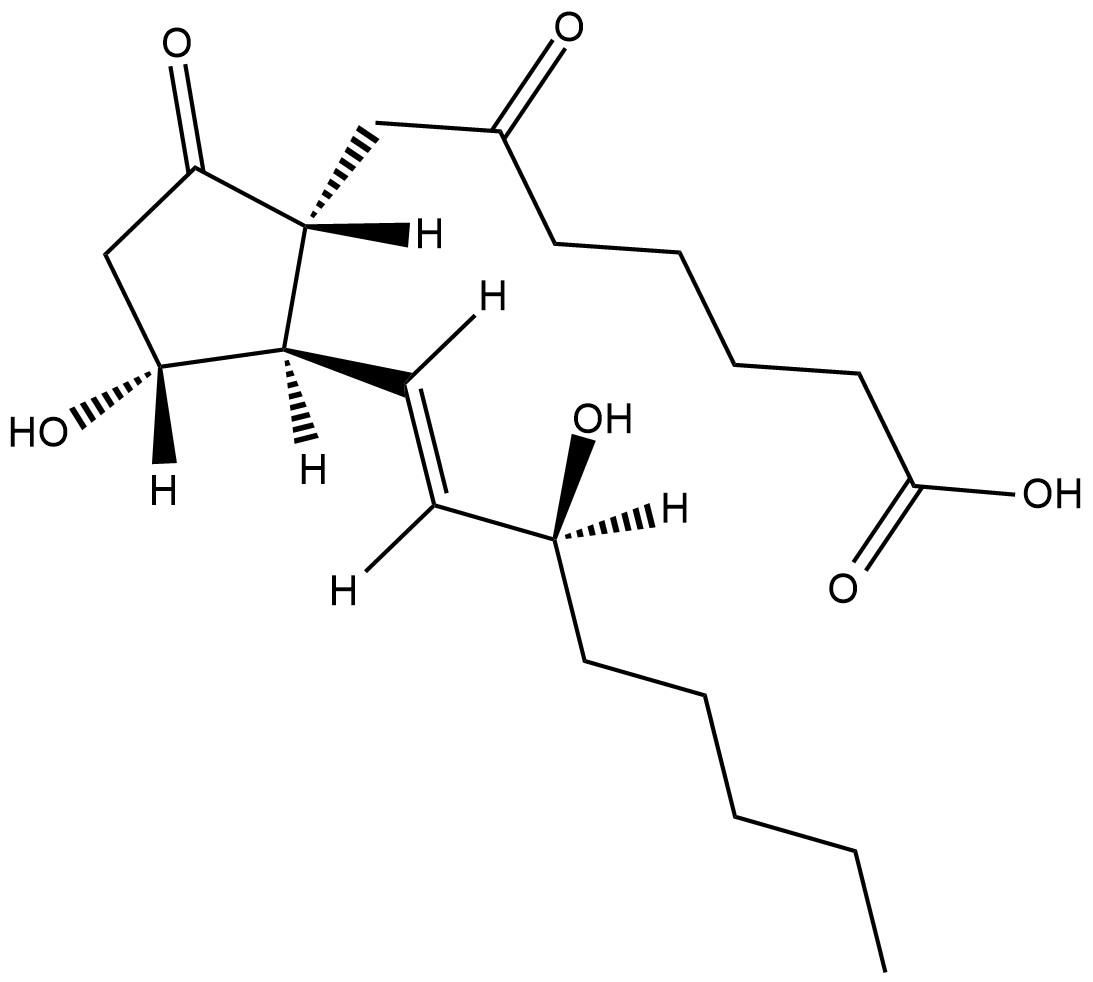
-
GC18393
6-keto Prostaglandin F1α
6-keto prostaglandin F1α (6-keto PGF1α) is the inactive, non-enzymatic hydrolysis product of PGI2.
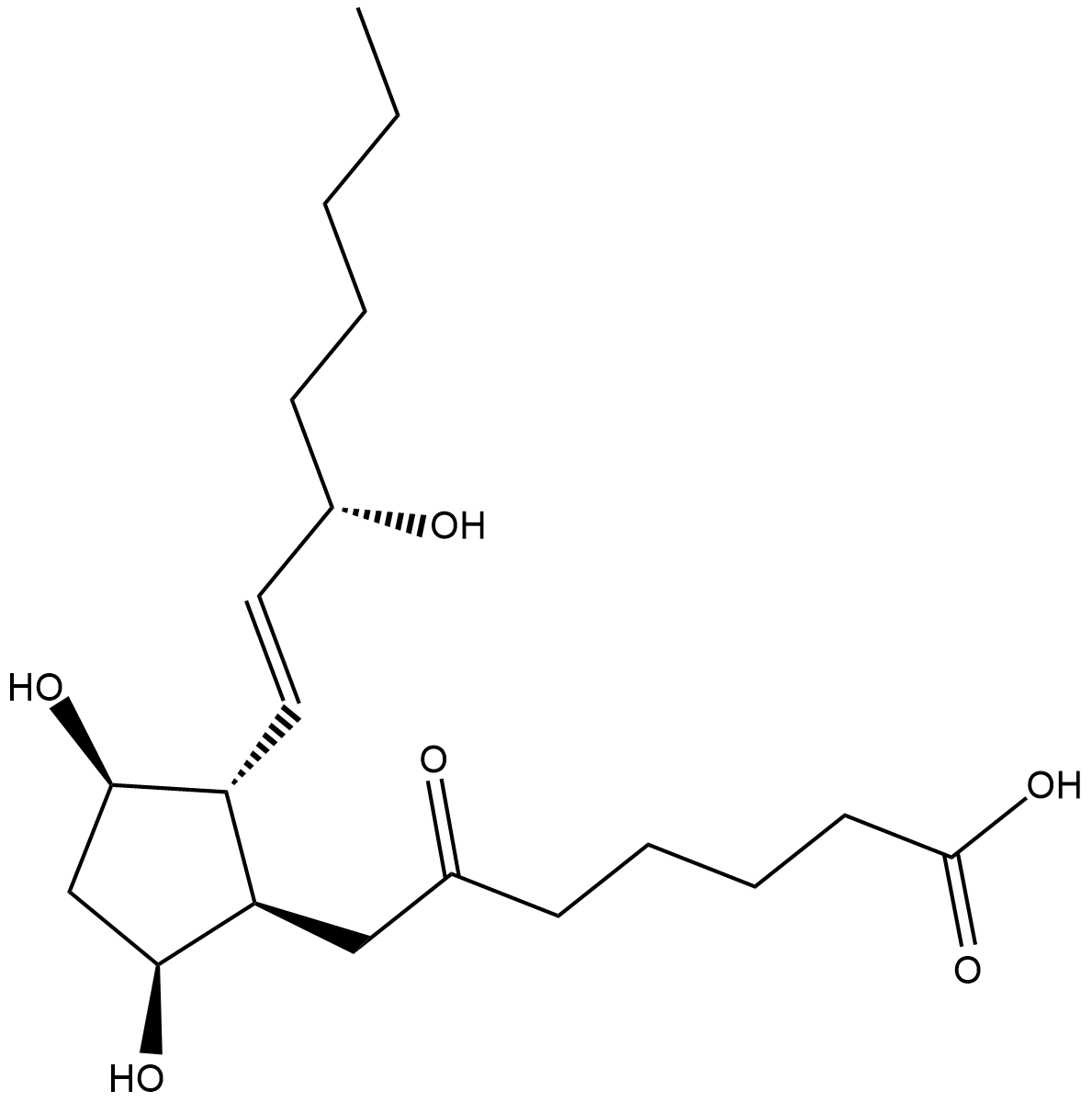
-
GC18841
6-keto Prostaglandin F1α-d4
6-keto Prostaglandin F1α-d4 (6-keto PGF1α-d4) contains four deuterium atoms at the 3, 3', 4, and 4' positions.
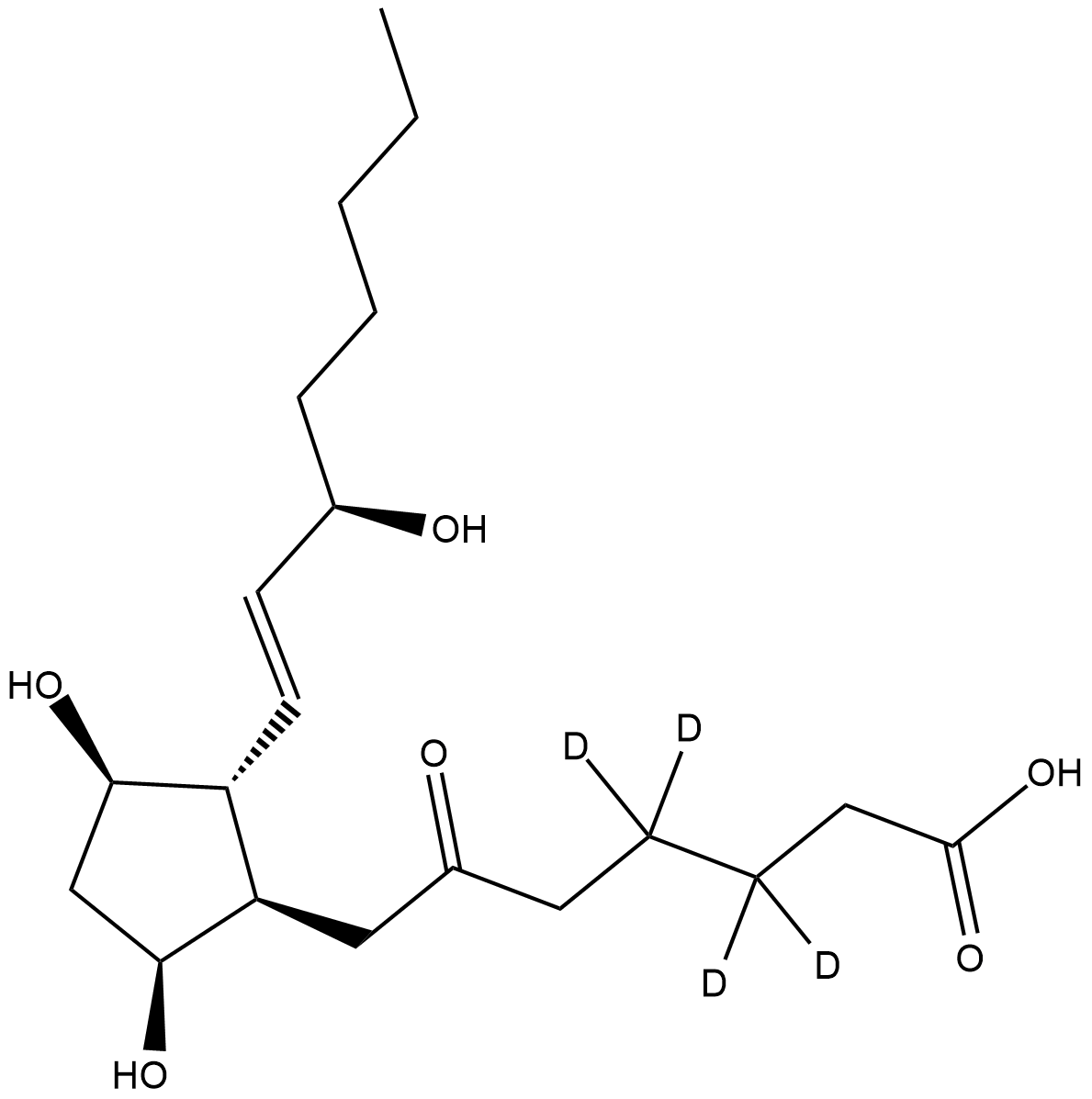
-
GC46080
7,3',4'-Trihydroxyflavone
7,3',4'-La trihidroxiflavona es un compuesto de aglicÓn flavonoide aislado de las vainas de habas.

-
GC49748
7-hydroxy Etodolac
An inactive metabolite of etodolac

-
GC46741
8(E),10(E),12(Z)-Octadecatrienoic Acid
A conjugated PUFA

-
GC41138
8-iso Prostaglandin A1
8-iso Prostaglandin A1 (8-iso PGA1) is an isoprostane and a member in a large family of prostanoids of non-cyclooxygenase origin.
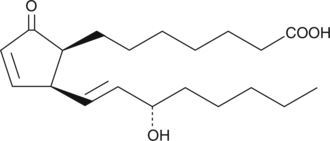
-
GC40250
9(S)-HODE-d4 MaxSpec® Standard
9(S)-HODE-d4 is intended for use as an internal standard for the quantification of 9(S)-HODE by GC- or LC-mass spectrometry.



